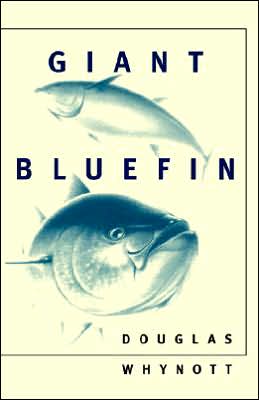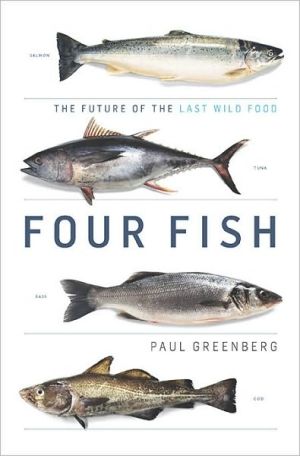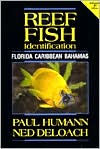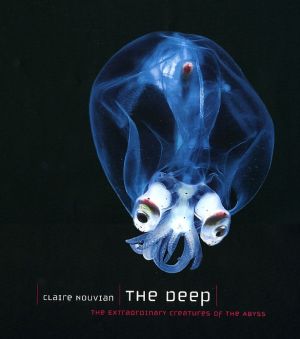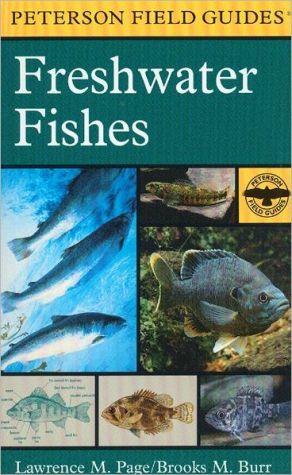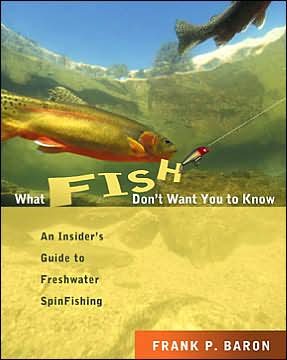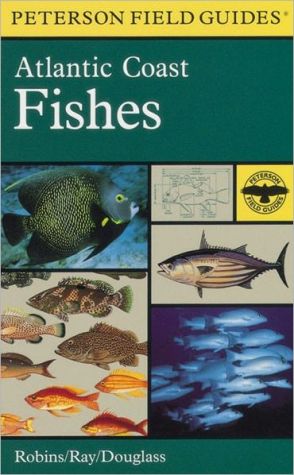Giant Bluefin
This elegantly written and compelling work portrays the way the Japanese demand for giant bluefin tuna has altered the lives of Cape Cod fishermen. In telling the story of one man's passionate hunt for giant bluefin, Douglas Whynott details the competition and camaraderie in the bluefin fishery, the pressures of a conservationist movement seeking to limit the bluefin harvest, and the struggle of the fisherman himself against "the wild horses of [the] fish species."
Search in google:
This elegantly written and compelling work portrays the way the Japanese demand for giant bluefin tuna has altered the lives of Cape Cod fishermen. In telling the story of one man's passionate hunt for giant bluefin, Douglas Whynott details the competition and camaraderie in the bluefin fishery, the pressures of a conservationist movement seeking to limit the bluefin harvest, and the struggle of the fisherman himself against "the wild horses of [the] fish species." Publishers Weekly The world's largest finfish, the bluefin tuna can grow to 10 feet and weigh 1500 pounds. It is a favorite with the Japanese, and a single fish has brought $42,000 (a piece of sushi in a Tokyo restaurant can cost $75). Whynott (Following the Bloom) takes us through two seasons of bluefin harpoon fishing off the New England coast from Cape Cod to Maine. He introduces Bob Sampson of Barnstable, whose family has lived and fished on Cape Cod since colonial times. Many bluefin fishermen, Sampson included, use spotter planes; Whynott goes out with one pilot. He observes the catch by Sampson's and other boats and details the route from dockside to the Tokyo fish market. In 1992, environmental groups attempted to limit the catch; fishermen argued that population stocks were plentiful. Whynott has written a fascinating story of the bluefin and the Cape Cod fishermen. (June)
Giant Bluefin\ PART ONE\ The 1992 Season\ ( 1 )\ THE SHOW\ \ \ THIS WOULD be an afternoon show, Brad Sampson figured. At least it had been so far, with the bluefin rising to the surface with the slack tide in the warmer part of the day. Bluefin tuna were an epipelagic species, meaning they ranged far and lived in the upper waters of the ocean. Bluefin liked to get close to the heat of the day, to cruise with their dorsal fins above water, like sharks or dolphins. "Making water," trailing wakes, by triangular aspect revealing their courses, a purple shade moving along, that was what the bluefin harpooners looked for. That was the show.\ Just three days ago, July 4, the last good-weather day, Brad Sampson, a harpoon fisherman, had been near Outer Kettle off Portland when he got a call from Eric Hesse, another tuna fisherman who'd come from Cape Cod to Maine to chase the first fish of the season. Eric told Brad that fish were only "five boats," or 250 feet, away. Brad had stopped the boat and was working on the engine. When he looked up, he saw four wakes coming his way. His mate took the wheel of the Scratcher, and Brad got on the stand, and they circled around behind the school—it's much more difficult to approach bluefin by going straight at them. The boat got close, but the school settled and Brad couldn't make a throw. That was a hard opportunity to miss. You didn't see fish up like that very often.\ Atlantic bluefin tuna seemed to show up first off the coast of Maine, or at least that was where the first fish were usually caught. Sixteento twenty bluefin had been taken so far this season. Strangely, some bluefin arrived in Maine fat, while most came in lean. The fish taken on June 11 weighed over 500 pounds "round," 370 pounds "dressed," and brought $16 a pound in Japan. Another tuna brought $25 a pound, and a third $43, but most of the others were not good enough—not fat enough—to merit a trip to the Japanese markets. These "domestic" fish were bringing about $3 a pound and went primarily to New England fish markets and restaurants.\ In Japan, red tuna meat, maguro, is an essential component of a good meal, and bluefin is the quintessential maguro—the food of perfection. Served raw in thin slices as sushi or sashimi, a two-ounce serving could cost as much as $75 in Tokyo. The Japanese consumed 400,000 tons of raw fish yearly, about 35 percent of it imported, and the raw market was the only niche for American fishermen. Bluefin tuna had the highest status among imports—3 percent by volume, but 10 percent by value. Of the many sources—Australia, California, Spain, the Canary Islands—the "jumbo bluefin" of New England, because of its size, oil content, and color, was most often the bluefin with the highest status on the Japanese market.\ The early arrivals in the Gulf of Maine (some called them "marauders," others called them "racers") had migrated to feed on the abundant mackerel and herring. They had come days or weeks ahead of the big schools now making their way north off the Atlantic coast, or heading in from eastern waters. And in concert with their prey, the fishermen working in Maine, harpoon fishermen generally, were also in the vanguard—ahead of other harpooners, and ahead of the fleets of rod-and-reel fishermen soon to drop their lines along the underwater ledges and hills, and ahead of the purse seiners, who would begin setting their nets in August. Fish and fishermen, scouts and hunters, testing the northern waters, following instinct, following leads.\ Brad Sampson, twenty-two years old, a college student, son of perhaps the best tuna fisherman in New England, thought these Maine fish were "squirrelly." Moving along in singles, pairs, foursomes, they weren't "acting right"—staying still long enough to be good harpoon targets. They were skittish, and shy, and they screwed too easy. But Maine was the only game in town right now, until schools of tunashowed up off the Cape and in Massachusetts Bay, and the way to succeed in tuna fishing was to be out there when it happened, to get on the fish, to make the throws, to work the percentages.\ \ \ THE SAMPSONS, and those like them, were the true sons of the whalers of old. In body and spirit, in style and confidence, speech and manner, sense and intuition, intent and determination, the fishermen who harpooned bluefin tuna in the waters of Cape Cod and the Gulf of Maine were the inheritors of the New England whaling tradition. The harpooners of the nineteenth century inherited the tradition from the Danes and Basques and the British before them, from the Native American hunters, from the fishermen who'd dried and traded their salt cod—New England's first currency. The bluefin tuna fishermen had the whaler's harpoon, the cod fisherman's persistence, and the lobsterman's boat, and in this last decade of the twentieth century, they had loran navigation systems and radios with scramblers and descramblers, and they had spotter planes. They had fax reports from Tsukiji market—like their seafaring ancestors, some had gone off to the Orient to trade. They had an international regulatory system subject to diverse contention.\ The bluefin tuna harpoon fishery in New England was technically advanced, and yet in its tool, that bronze harpoon head riding off the prow, it was also the most primitive, so ancient in aspect it spoke of the toggled Indian harpoon made of bone, spoke of the Eskimo hunters, spoke of the African or South American tribesman working the edge of a river a hundred thousand years ago, spoke of a preternatural tool hardened in the first fires over which the first languages drifted.\ Transposed whalers, then, riding the pulpit in the swell, in Nantucket Sound and Cape Cod Bay and the Gulf of Maine. Their prey was also at a kind of apex. Thunnus thynnus (the rushingest of the rushing) was the largest of the finfish (a torpedo, ten feet long, a thousand pounds), and among the fastest (a hummingbird's response, a bumblebee's musculature, fifty-mile-per-hour bursts), and the most highly migratory (transoceanic, a tropical fish evolved to feed in subpolar waters), the most valuable (a $5,000 fish, a $50,000 fish), amongthe most fertile, and by the hue of its opalescent skin, its ovoid form, its lunate tail, perhaps the most beautiful. Bluefin swam with whales and dolphins, swam in phalanxes, shot into the air to chase bluefish or to escape killer whales. No one who had ever seen them charging along in formation, a bank of three, say, making water, would ever forget their shouldering mastery and grace.\ Since the bluefin was one of the most intensively sought fish, some people claimed it was the most endangered. Fishermen at government hearings, arguing against proposed decreases in U.S. quotas, talked of the balance of trade, of how they were sending product to Japan, of how their New England bluefin tuna were equivalent to Japanese automobiles—a tuna for a Toyota. The stocks, they claimed, were abundant, and the government assessments were inaccurate. As they saw it, the fishery, not the fish, was endangered.\ \ \ THE FIRST time I saw the tuna fishermen at work was not on a Sampson boat but with a charter captain. He ran a million-dollar boat for a retired businessman and I had come along for the day. Heading out of Cape Cod Bay, he gave me the wheel, said he was going to make some coffee, and told me to look out for tuna. If you see a fin like a shark's, he said, yell. Soon I did see fins, and I shouted below. The captain came up the ladder but by then, after a pair of the animals had soared out of the water in crossing arcs, I knew they were dolphins. (I had a good eye for them, since at one time I'd blown whistles at trained dolphins, shouted orders at them to jump through hoops, spit out fires, wave bye-bye, and pluck pieces of paper out of my mouth at ten feet above the water.) This dolphin school, this day, loosely moving along, looked like a tribe of hunters and gatherers migrating to ancient feeding grounds.\ The captain crossed the tip of Provincetown and went about six miles off the Cape. Soon we saw a wake, and the flash of a tuna's side as it turned to go down. Then we saw whales feeding, dozens of them. They were finbacks and humpbacks eating sand eels, fish the size of sardines. Some whales crashed to their sides to stun the fish. Others slapped their tails or bobbed up and down, pitchpoling side by side,mouths open. The cleverest among them went below and spun circles, blowing bubble rings. When the sand eels bunched into the center, the whales coursed up with open mouths. Some whales even worked together, making communal bubble rings.\ Cruising among the whales were the tuna boats. Occasionally someone would run out on a pulpit, the stand projecting from the bow, but we didn't see anyone make a throw. The tuna were below the whales, snapping at the sand eels, and they weren't making themselves available, they weren't acting right. Meanwhile, two spotter planes worked the air.\ It seemed odd that the whales were no longer the prey, the point of the hunt in this place. Time, progress, had passed them by. They were no longer the source of food and light and bone. Only two decades earlier, the bluefin tuna, the "horse mackerel," was worth five cents a pound and served as cat food. Now this prime sushi fish was airfreighted, fresh on ice, to Japan.\ Standing in the tower above the wheelhouse that day, the captain said, "Catching's bad, but the fishing's good." And it was true. The bubble rings, the flapping tails, the breaching and pitchpoling, the boats with dipping pulpits and nodding towers, the drone overhead, seemed a strange dance, a confluent motion, a technological and natural spectacle, on a sunlit day, with the water soft and blue, and a view of the Wellfleet sand cliffs off to the west.\ \ \ No BUBBLE feeding, not a whale in sight in the Gulf of Maine on this day. Brad Sampson and I and the first mate, St. John Laughlin, were huddled up in the tower of the Scratcher, heading away from Portland Harbor. "We should get a good charge of fish today," Brad said. "It should be an afternoon show. Conditions should be right."\ Though it was calm and clear, we were riding into the air, cruising along at eight knots. It was a hot day, in the eighties. Brad had smeared his sunburned nose and face with sunblock. He and his mate were wearing long-sleeve shirts, jackets, hats, and polarized sunglasses with leather side shields that cut the glare and gave a better view down into the water. Days of wearing this binocularized getupleft harpooners with pale foreheads and burned cheeks—tuna tans.\ Brad pulled a chart out from a cabinet in the tower and unfolded it. He pointed out the areas they'd been working—a twenty-mile path from Murray Hole to Outer Kettle to Mistaken Ground, and another twenty miles to the east, over to Toothaker Ridge, in water 200 to 250 feet deep.\ We were crossing the Pasture on a course for Outer Kettle, headed for a meeting with "Brooksie"—Fred Brooks, the Sampsons' spotter pilot. Brooksie usually flew for Continental Airlines, but he had recently begun a leave of absence. For the rest of the summer he would function as the Sampsons' eyes, from 900 feet.\ "So far we've been looking for them by sight," Brad said. "That's a lot harder. You have to stay intense all day, eight hours, looking on the water. It can get to your eyes."\ The Scratcher was a "stick boat," and you could spot a stick boat a long ways off. Crossing the horizon, they looked a bit like mounted knights carrying lances, with their towers perched over the wheelhouses and the long pulpits leading the way. Some towers looked like old-style mastheads with crow's nests, but others (such as the Scratcher's) were four-legged structures modeled on power-line towers. Three people could stand in the tower and ride comfortably. Climbing a tower on a moving sea was like scaling a metronome, a real test of the wrists.\ The Scratcher's pulpit was made of a modified utility pole. It was 25 feet in length and hinged to the bow, and could be cranked up like a drawbridge when the boat was in harbor. In the basket at the end of the pulpit was the "stand," a small piece of plywood, and at waist height was a padded "belly rail" for the harpooner to lean into while throwing. The harpoons were 12 feet long and an inch thick and made of aluminum (some Maine harpooners still used spruce poles). The bronze "dart" was shaped like an arrowhead and wired for an 800-volt charge. The dart was also attached to 600 feet of line and a "rig" of plastic balls, or a float, stick, and flag. In the way that an exceptionally long nose precedes a face, a harpooner in a pulpit preceded his boat by a second or two and could "get over the fish."\ Brad spotted Brooksie in the sky several miles away, and before long there was a ring on the radio.\ "I got fish here," Brooksie said. "Four giants." The Scratcher steamed toward the circling plane. A wing dipped, the pilot peering down, keeping his eye on the fish.\ "Nice fish there," Brooksie said.\ "Long as they're fat."\ "This is Brooksie's first day out," Brad said. "Everything's gonna look good to him today."\ "Head one o'clock," Brooksie said. Tuna harpooners use a clock system universal in plane and boat fishery, universal in nature—the circle of the sky or sea analogous to the face of a clock. The Scratcher's bow and pulpit pointed to noon.\ The Scratcher pushed ahead at twelve knots. "I see a stick boat," Brooksie said. Another boat was coming toward us, white water spraying off the bow. Brad said it was probably Eric Hesse, or Nick Nickerson, a fisherman from Chatham on Cape Cod, or maybe even Lexie Krause, from Monhegan Island, Maine.\ "Small giants," Brooksie said. "They're swimming erratically."\ "Small fish act a lot crazier," Brad said.\ "One o'clock now," Brooksie said. Brad wheeled to the right. "Keep the speed up. Keep it coming. To port just a hair, port just a bit."\ Sun gleamed off the plane as it turned with lowered wing.\ "Six boats." Six lengths away now.\ Brad cut the engine back and climbed down the tower. St. John took the wheel. He had been working for the Sampsons for five years. He'd just finished high school.\ "Touch to starboard. Four boats."\ Brad walked out on the pulpit, running his fingers along the guide wires. With his easy athleticism and lithe step, the polo shirt, the white-blond hair, the visor cap, Brad did look like a college student. He unfastened the harpoon, and held it out in front of the belly rail.\ "Swing right," came the voice from the sky.\ "Twelve o'clock. Two and a half boats. Two boats."\ Brad cupped his hand over the end of the harpoon and pointed thedart into the water a few feet ahead of the pulpit. He was rising and falling with a roll of about an eight-foot pitch. St. John cut the speed to a near drift.\ "Twelve o'clock. Boat and a hall. Three-quarters of a boat."\ Brad sighted.\ "He's gone."\ Brad hurriedly tied up the harpoon. He walked down the pulpit and ascended the mast into the tower.\ "You see that, Brooksie? That fish changed direction on me."\ "Yeah. I got another one over here. Four-hundred-pound giant."\ Down went the throttle and the boat roared ahead to the circling bird.\ "Four boats," Brooksie said. Brad climbed down again, and went back into the pulpit. St. John cut the engine.\ "Three boats. Two and a half. Two. Touch to port and three-quarters."\ We came upon a fish that was nearly showing. It was perhaps three feet below the surface. Brad coasted over it, over the gold-brown, blue-tinted body. We could see the yellow fins along the tail. The fish had been swimming away from the boat—Brooksie had brought the Scratcher up from the rear—but then it took a turn to the right. And then it stopped for a moment. It knew we were there. Brad flung the harpoon. With a look of annoyance and three flicks of its tail, the tuna darted down and out of sight, sounded at an angle of, well, 120 degrees.\ Sounded, sound—it was the appropriate word for this movement off into the third dimension.\ Brad climbed back up the tower.\ "Sorry, Brooksie. He scooted away."\ "Good throw. Looked like it went under."\ "Fish went to starboard."\ "Brooksie lined off to work another patch of water.\ "That fish looked at me," Brad said. "They do that. They pause, that's what we call it. Once they pause, just a fraction of a second and they're gone. That's it. You've got to get your throw off quick."\ \ \ \ \ "I'M AFRAID to stay in a place like this," Brad said, "where there's a lot of singles acting squirrelly."\ We cruised, waiting for Brooksie to give the call for a charge. A red plane went by, flying well below Brooksie's altitude. Brad didn't know who the pilot was. But he talked of someone named the Hummer, who talked like a radio deejay ("Hey, this is the Hummah"), and another pilot, Trip Wheeler, who yelled into the radio when he found fish ("Holy Jesus! I got fish here!").\ Brad talked of the pressure on the harpooner, with the crew watching from the boat, the pilot from above, and all the money at stake with each throw.\ "Last summer I had a lot of days when I missed a lot of shots. I missed some big fish early in the day and had to settle for something smaller in the afternoon. If my father had been on the boat he would have caught a lot of fish.\ "It will be a long time before I get to the point my father's at," Brad said.\ Bob Sampson had almost left the Cape that morning, but then decided to hold back. "He hits fish he can't see. He knows when the school is going to turn or go down. He knows the way refraction works in the water. Actually, he doesn't know. He just does it.\ "I'm competitive, though. A lot of it is ego. If you only have five fish on July 25 it hurts a lot less if everyone else has five fish, too. Ego plays a big part. Actually, my big objective this summer is to catch more fish than my dad. If I keep up with him I'm doing well, but I want to catch more than him." Brad smiled.\ Brooksie found another bunch, and off we went like cavalrymen. Twenty boats—fifteen, eight, five, four at twelve o'clock. The fish went down, and then came up, two boats away, and the school settled.\ A few minutes later we steamed off again. A fish went down, up, and then headed into the path of the sun. Brad got off a throw. He radioed Brooksie. "That fish was hittable, dammit."\ By the amount of activity and the number of sightings, this seemed a morning show, although none of the fish had made water.\ Another run: a fish went to starboard, disappeared, came up, one o'clock, four boats, twelve o'clock, three boats, and then sounded.\ On the eighth run, just before noon, a single screwed hard to starboard. Brooksie mentioned that there was a fog bank further south. This was important news because Brooksie had to be able to see into the water to do his work. Harpooning with planes was entirely dependent on weather conditions. It was a good-weather fishery.\ St. John made sandwiches for himself and Brad, from ham and cheese they'd been keeping on ice and which had seen better days. The cookies were just about gone too. They'd been moored in Portland a week. Brad said his mom would be coming in with new supplies if they stayed in Maine much longer. The Scratcher seemed a boys' boat now.\ After lunchtime the weather changed. The temperature dropped ten degrees, and a wind came in that ruffled the water. The sky became somewhat overcast, too, and the water turned from blue to gray. Perfect weather, Brad said, rough enough so the fish couldn't see the boat coming in, and no whitecaps, "so any white water is tuna." The high tide was followed by the slack. "This is when the charge comes," Brad said.\ Brad had written a paper on tuna fishing for one of his courses at Penn State, where he was studying to become a junior-high English teacher. He had defined the harpoon fishery as a cultural group, and explained terminology such as "smashing" (fish hitting prey at the surface), "lollygagging" (a fish swimming lazily along), a "show," a "charge," and a "bunch." Now Brad was writing an honors thesis on school censorship. He'd found that in Pennsylvania the most commonly banned books were American literary classics: Of Mice and Men, The Catcher in the Rye, Huckleberry Finn, and The Grapes of Wrath.\ Brad would be doing his student teaching in the fall, and before long he would face a decision about whether to teach school or be a commercial tuna fisherman. Brad's mother, Penny Sampson, who had lived the life of a fisherman's wife, wanted him to teach. His father, who admired him thoroughly and loved having him in the business, hadn't done much to influence him other than making a tuna boat available in case he needed it. Brad hadn't worked for anyone but his father, and he couldn't imagine not being on the water. Until hewent to college and talked to other students about what they did in the summer, Brad hadn't realized that he had lived a singular life. Some kids got to the ocean one day a year, but Brad had been on a boat every summer since the fifth grade. People remembered seeing him come into the harbor, steering the boat, when his head was just above the wheel. Brad had seen whales and dolphins and basking sharks and all the beautiful ocean scenes as a matter of course. He'd caught enough bluefin tuna to pay for his education. In certain seasons of the fishery, he could make as much money in a week as a schoolteacher made in a year.\ Of course Brad remembered the hard times, too. One summer in the early 1980s they caught just one fish, and the next year they lobstered in the mornings before fishing for tuna in the afternoons. In 1985 the fish were spooking, and they got only three. Brad remembered his father working the night job and pounding nails by day, going quahogging and musseling in the dead of winter to make boat payments. But 1986 was a good year, and so were the several that followed. By 1990 the Sampsons had a second boat, the Rush. Brad worked on his own that year. For three years now he and his father hadn't spent a day on the same boat.\ There were great memories, lots of stories: returning home along the south shore of Cape Cod on the Fourth of July and seeing fireworks in the towns all along the way; coming from Cape Cod Bay into Barnstable Harbor at the end of the day with a fish in the boat and a full cooler, and talking to the other fishermen, the best of people; working off Montauk with his father and racing two other boats for fish—one guy in a sport boat, out front in a bikini bathing suit holding a harpoon, and another guy in a Boston Whaler, a fat man with a cigar in his mouth, held by his suspenders as he leaned out from the bow, all three boats charging at the bunch; going into a cove in Maine on a foggy night, and waking up the next morning to discover a pristine coastal village. Working with his father.\ Brad feared that the decision wouldn't be his to make. If the scientists with the National Marine Fisheries Service and the various conservation organizations that had gotten involved in the bluefin tuna fishery had their way, there would be a 50 percent reduction inthe quotas—the amount of fish that could be taken each year. That would probably mean an end to commercial bluefin tuna fishing. Brad was a conservationist. He wanted to see the stocks preserved because he wanted the fishery to survive. But they were going too far, he was certain. What those people needed to do was to get up in the planes, to see just how many fish there were out there. Some days, when the conditions were right—usually when a high-pressure weather front came through—all the fish from Nantucket Sound to the Bay of Fundy came up to the surface and showed. Fish everywhere, acres and acres of them. That's what the NMFS people needed to see.\ \ \ THE FISH didn't rise to the surface this afternoon in Maine, although Brad and the Scratcher made repeated runs. At about three o'clock Brooksie found a school of small giants near Mistaken Ground. To get there we had to make a five-mile trip that would take about twenty minutes.\ Several other stick boats, cued in by their pilots, were steaming, too. We had to cross the shipping channel into Portland just as a Navy ship was heading into port. Passing through the wake was a rough ride, the pulpit scooping low and the tower slamming back. Over the radio Brad got word that Nick Nickerson had broken a weld on his pulpit. Nickerson had an especially long pulpit on his boat, anyway, and some fishermen had nicknamed it Pinocchio. One fisherman said the Navy ship had increased speed in front of the stick boats. Would a Navy captain, looking at the awkward sight of high tower and exaggerated pulpit, get a kick out of seeing the funny-looking boats tilt and roll in his wake? The fishermen thought so.\ The bunch Brooksie was on had disappeared by the time Brad got there. After a half hour we made another run, but those fish went down too. Yet another run stopped short. Between charges Brad and St. John cruised along, looking for show.\ Trails of a light fog came in, and then the sun got too low for Brooksie to work the water. For a while he worked the edge of the glare, getting the sun behind him, running lines like a plowman. Atabout five o'clock he made a low pass, and with a smile and wave headed off to Rockland.\ It got cold enough for gloves. Eric Hesse called Brad on the radio. He said he had news and would be right over. Soon his boat loomed in from the edge. Eric's boat was called the Tenacious, after one of the qualities of a successful tuna fisherman, one of Eric's own qualities. The Tenacious pulled up parallel to the Scratcher, and the two boats, the two towers, bobbed side by side. Knees strained, stomach muscles clenched, we did the metronomic swing, though Brad, St. John, Eric, and his brother John took the to-and-fro with ease.\ "These fish are acting funny!" Brad yelled.\ "Water temperature's at fifty-four, fifty-five!" Eric called back. "Optimum's sixty-four!" The theory was that the cold temperatures had kept the tuna from coming north as soon as they might have, and that it had hindered the show.\ "Woodsie got two fish in the bay!" Cape Cod Bay, Eric meant. Chris Woods was a member of their group, Cape Quality Bluefin, twelve Cape fishermen who had gotten together to market their catch directly with the Japanese.\ Bluefin were now in Cape Cod Bay, close to home.\ "And I just talked to Trip!" Trip Wheeler was Eric's spotter pilot. He had flown back to Cape Cod, and he had seen something along the way. This was the news. "Eight schools just came in! Four of them with a hundred and fifty fish!"\ Now the squirrelly fish off the coast of Maine were especially poor prospects. The season, it seemed, was about to begin.\ "We're going to P-town! It's eighty-five miles from here! If we leave now we can get there at three or so! We'll sleep in the boat and head out at five!" The captain of the Tenacious smiled broadly at the prospect of this adventure. Then his boat dropped away, and turned for the south. Brad steamed for Portland, twenty-two miles away. They'd get some dinner, and supplies, and arrange for someone to pick up Brad's car.\ The sun was setting over the shore on the way in, the sky turning peach, pink, and lime, blue deepening to black. Cruising toward theilluminated sky and the silhouetted shore was one of the inherent pleasures of fishing. This ritual of heading into the fading daylight was one of the reasons fishermen could be so happy.\ They were on to some different fish, some better fish. Later that night, after a few hours' sleep, Brad and St. John left for Cape Cod. Brooksie met up with them in the morning, and so did Bob Sampson. That day was one of Brad Sampson's best as a harpoon fisherman. The fish acted right that day.\ Copyright © 1995 by Douglas Whynott
\ Publishers Weekly - Publisher's Weekly\ The world's largest finfish, the bluefin tuna can grow to 10 feet and weigh 1500 pounds. It is a favorite with the Japanese, and a single fish has brought $42,000 (a piece of sushi in a Tokyo restaurant can cost $75). Whynott (Following the Bloom) takes us through two seasons of bluefin harpoon fishing off the New England coast from Cape Cod to Maine. He introduces Bob Sampson of Barnstable, whose family has lived and fished on Cape Cod since colonial times. Many bluefin fishermen, Sampson included, use spotter planes; Whynott goes out with one pilot. He observes the catch by Sampson's and other boats and details the route from dockside to the Tokyo fish market. In 1992, environmental groups attempted to limit the catch; fishermen argued that population stocks were plentiful. Whynott has written a fascinating story of the bluefin and the Cape Cod fishermen. (June)\ \ \ \ \ Library JournalBluefin tuna, highly prized by the Japanese for sushi and sashimi, are caught by harpoon by New England fishers in the Gulf of Maine. The boats work in tandem with pilots flying overhead, who spot the presence and position of schools of fish. Whynott (English, Mount Holyoke Coll.) spent time with fishers and pilots working out of Cape Cod to become familiar with all aspects of the bluefin tuna fishery, including tuna physiology, marketing economics, and the efforts of conservation interests to limit the catch. Although it may appeal only to a limited audience, this is a beautifully written account full of human interest about the lives of the spotter pilots and several members of a fishing family. Appropriate for specialized collections and for public libraries in fishing communities.-Judith B. Barnett, Pell Marine Science Lib., Univ. of Rhode Island, Kingston\ \ \ BooknewsBluefin tuna are the largest finfish in the ocean and the fishermen who harpoon them, one at a time, lead a traditional, athletic, even heroic life, according to Whynott. The author spent two seasons in the company of a 47 year-old Cape Cod harpooner and tells the story of his "passionate hunt for his noble and elusive prey," as well as the struggle between the fishermen and conservationists. No scholarly trappings. Annotation c. Book News, Inc., Portland, OR (booknews.com)\ \
